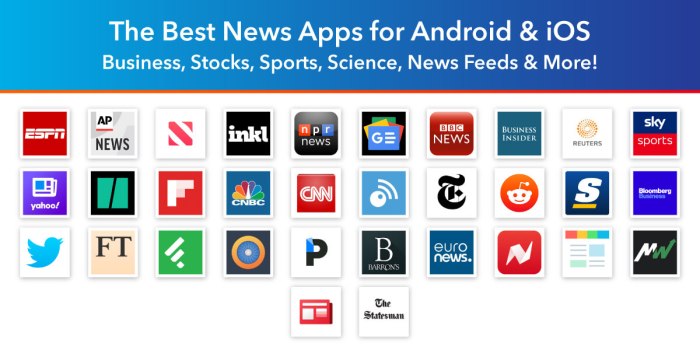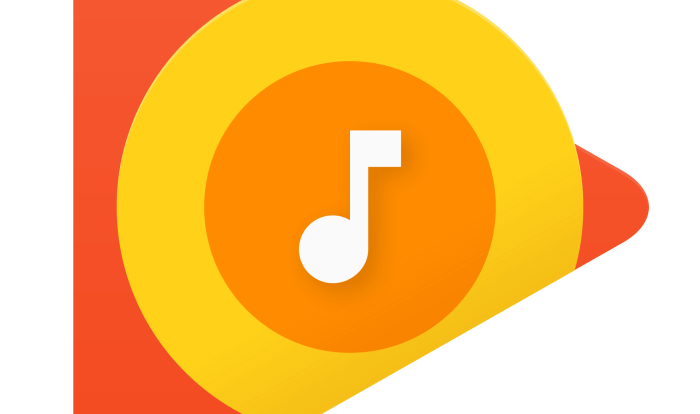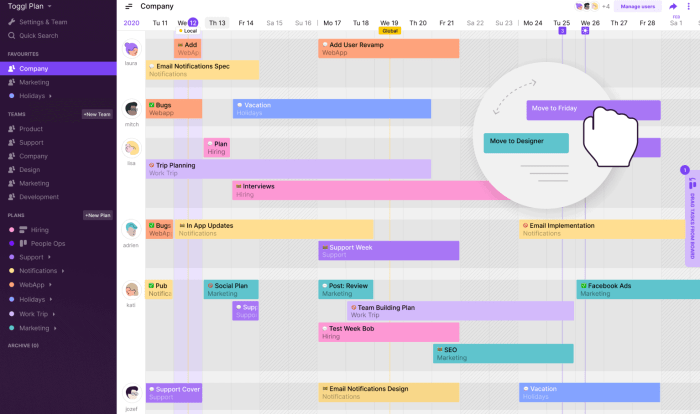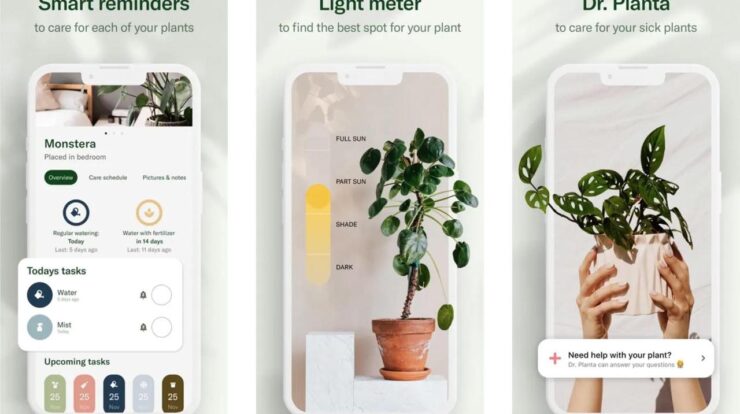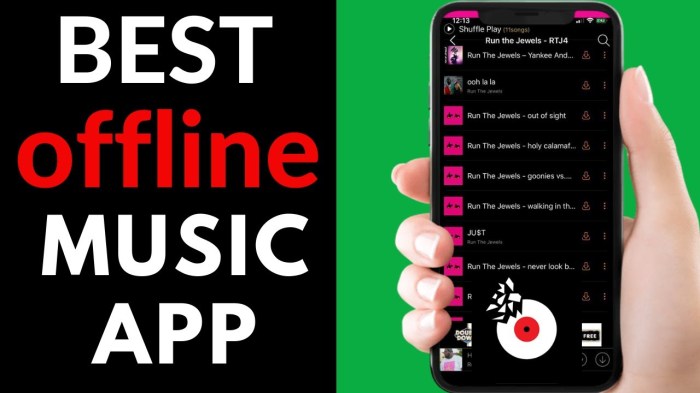
Offline music apps have revolutionized the way we listen to music, providing us with the freedom to enjoy our favorite tunes anytime, anywhere. Whether you’re commuting, traveling, or simply seeking an escape from the internet, these apps offer a convenient and versatile solution for music lovers.
From managing music libraries to discovering new artists, offline music apps come with a range of features designed to enhance your listening experience. This guide will delve into the world of offline music apps, exploring their advantages, functionality, and the factors to consider when choosing the best app for your needs.
Most Popular Offline Music Apps
In the realm of digital music consumption, offline music apps have emerged as a formidable force, empowering users to enjoy their favorite tunes without the constraints of an internet connection. These apps offer a plethora of advantages and features, catering to the diverse needs of music enthusiasts.
The advantages of using offline music apps are undeniable. They provide users with the freedom to listen to music anywhere, anytime, without worrying about data usage or streaming limitations. Moreover, they offer greater control over music selection, allowing users to curate and organize their own playlists without relying on algorithms or recommendations.
User Experience and Interface
The user experience and interface of offline music apps are crucial factors in their popularity. These apps typically feature intuitive designs that prioritize ease of use and accessibility. They often incorporate features such as quick search functions, customizable playlists, and seamless playback controls.
Offline music apps are a great way to enjoy your favorite tunes without using up your data plan. If you’re looking for a way to listen to audiobooks offline, there are several free audiobook apps available. These apps allow you to download audiobooks to your device so you can listen to them anytime, anywhere.
Once you’ve downloaded an audiobook, you can listen to it offline without having to worry about using up your data. Offline music apps are a great way to keep yourself entertained on long car rides or flights, and they’re also a great way to relax before bed.
The user interface plays a vital role in enhancing the overall experience. Well-designed apps employ clean layouts, visually appealing elements, and responsive navigation, making it effortless for users to navigate and manage their music collections.
Disadvantages
Despite their numerous advantages, offline music apps also have some disadvantages. One notable drawback is the storage space they require. Storing large music collections can occupy significant space on a device, especially for users with limited storage capacity.
Another potential disadvantage is the lack of real-time updates and new music discovery. Unlike streaming services, offline music apps do not automatically provide access to the latest releases or personalized recommendations. Users must manually update their collections by downloading new music.
Popular Offline Music Apps
The market for offline music apps is highly competitive, with numerous options available to users. Some of the most popular and well-regarded apps include:
- Spotify
- Apple Music
- YouTube Music
- Amazon Music
- Deezer
- Tidal
- Pandora
- iHeartRadio
Each of these apps offers a unique set of features and benefits, catering to different user preferences. Some apps prioritize music discovery and personalized recommendations, while others focus on providing a comprehensive offline music library and high-quality audio playback.
Offline music apps are a great way to enjoy your favorite tunes without an internet connection. But did you know that there are also online real money guide that can help you win big? Check out this guide to learn more about how to win real money playing games online.
After you’ve won some money, you can use it to buy even more offline music apps!
Key Features and Benefits
The key features and benefits of popular offline music apps vary depending on the specific app. However, some common features include:
- Offline listening: Ability to download and store music for playback without an internet connection.
- Music library management: Creation and organization of playlists, albums, and artists.
- Music discovery: Access to a vast catalog of music, including new releases and personalized recommendations.
- High-quality audio playback: Support for various audio formats and playback settings.
- Cross-platform compatibility: Availability on multiple devices and operating systems.
These features and benefits make offline music apps an attractive option for users who prioritize convenience, control, and high-quality music listening experiences.
Features and Functionality
Offline music apps provide an array of essential features to manage and enjoy music without an internet connection. These features include:
Music Library Management:These apps allow users to import music from their local storage, organize it into playlists, albums, and genres, and create custom collections. They also offer advanced filtering and search options for easy navigation.
Playback Controls, Offline music apps
Offline music apps provide comprehensive playback controls, including play, pause, skip, shuffle, and repeat functions. They also allow users to adjust playback speed, set sleep timers, and create seamless transitions between tracks.
Offline Storage Capabilities
Offline music apps enable users to download music for offline listening. This feature is crucial for situations where internet connectivity is unavailable, such as during flights, road trips, or in areas with limited data coverage.
Audio Format Support
Offline music apps support a wide range of audio formats, including MP3, AAC, FLAC, WAV, and WMA. This allows users to play music from various sources and enjoy different audio quality levels.
Customization Options
Offline music apps offer customization options to personalize the user experience. Users can create and edit playlists, customize album artwork, and edit metadata, such as track titles, artists, and album information.
Music Discovery and Recommendations
Offline music apps have revolutionized music discovery and recommendations, empowering users to explore new tunes and personalize their listening experience. These apps leverage curated playlists, tailored suggestions, and genre exploration to introduce listeners to a vast and diverse musical landscape.
At the core of these apps’ recommendation engines lie sophisticated algorithms that analyze user preferences, listening history, and a wealth of musical data. By identifying patterns and correlations, these algorithms generate personalized playlists that align with each user’s unique tastes.
User Ratings and Reviews
User ratings and reviews play a crucial role in shaping the app’s recommendations. When users provide feedback on songs, albums, or playlists, they contribute valuable data that helps the algorithm refine its suggestions. Positive ratings indicate user satisfaction, while negative feedback highlights areas for improvement.
By incorporating user input, offline music apps can continually adapt and improve their recommendation systems, ensuring that users are consistently presented with music that resonates with their preferences.
Integration and Compatibility: Offline Music Apps
Offline music apps seamlessly integrate with a wide range of devices and platforms, enhancing the user experience and music accessibility.
These apps are compatible with various operating systems, including iOS, Android, Windows, and macOS, ensuring cross-platform compatibility. They support a diverse range of file formats, such as MP3, AAC, WAV, and FLAC, catering to different audio quality preferences.
Device Integration
- Offline music apps can be integrated with Bluetooth speakers, headphones, and other audio devices, allowing for wireless music playback.
- They offer seamless music transfer between devices, enabling users to sync their music libraries across multiple smartphones, tablets, and laptops.
- Some apps even support integration with smartwatches and fitness trackers, providing convenient music control during workouts or on the go.
Cloud Integration
- Many offline music apps offer cloud storage integration, allowing users to backup their music libraries and access them from any device.
- This cloud-based approach eliminates the need for manual file transfers and ensures music availability even when devices are lost or replaced.
- Cloud integration also facilitates music sharing and collaboration with others, enhancing the social aspect of music listening.
App Design and User Interface
Offline music apps prioritize ease of use and intuitive navigation, enabling users to effortlessly access and manage their music collections. They employ well-organized interfaces that simplify music discovery, playback, and library organization.
Visual elements play a crucial role in enhancing the user experience. Album covers, artist profiles, and lyrics display add a touch of personality and make the app more visually appealing. These elements provide a more immersive and engaging music listening experience.
Innovative Features
Offline music apps often incorporate innovative features to differentiate themselves. Some examples include:
- Smart playlists:Automatically generate playlists based on user preferences, mood, or activity.
- Gapless playback:Eliminates pauses between tracks, providing a seamless listening experience.
- Customizable themes:Allow users to personalize the app’s appearance with various color schemes and skins.
- Offline lyrics display:Provide lyrics for songs even when there is no internet connection, enhancing the karaoke experience.
Conclusion

In the ever-evolving landscape of music consumption, offline music apps have established themselves as indispensable tools for music enthusiasts. By empowering users with control over their music and offering a seamless listening experience, these apps have redefined the way we enjoy our favorite tunes.
Whether you’re a seasoned music aficionado or simply looking for a convenient way to listen to your music offline, this guide has provided you with the knowledge and insights to make an informed decision.

